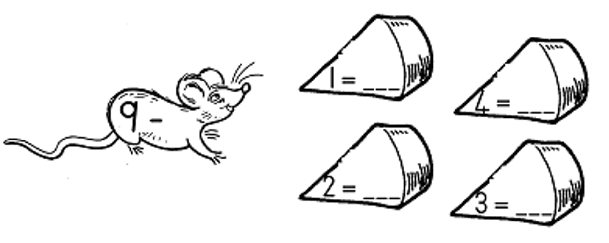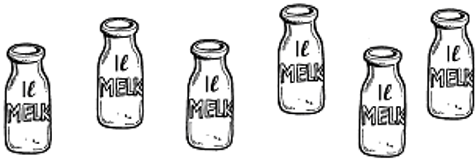| << Chapter < Page | Chapter >> Page > |
There are …………………………………………………………. legs.
There are …………………………………………………………… ears.
There are ……………………………………………………………. eyes.
There are ………………………………………………………… tails.
Count: 4, 8, ………………………… , 20.

| LO 1.1 | LO 1.8 | LO 2.2 |

………………………….. comes before 10
………………………….. comes before 8
………………………….. comes before 13
………………………….. comes before 15
………………………….. comes before 12
………………………….. comes before 11
………………………….. comes before 20
………………………….. comes before 17
| 3 three | 4 | 10 |
| 6 | 7 | 8 |
| 1 | 9 | 3 |
| 2 | 5 | 2 |

| LO 1.3 | LO 1.4 | LO 1.6 | LO 1.9 |


oval

| LO 1.2 | LO 1.7 | LO 3.1 |

| LO 1.8 |


| LO 1.8 |



There are ………………………..ℓ of milk altogether.
Now there are ……………………………ℓ left.
I pay R ………………………….. for 6 ℓ of milk.
| LO 1.8 | LO 1.5 | LO 4.6 |


| LO 1.8 | LO 3.1 |

| LO 1.6 |
| 7 | 8 | 9 | 6 | 3 | 2 | 1 | 4 | 5 | |
| +4 | 11 |
| 7 | 8 | 9 | 10 | 4 | 5 | 7 | 6 | 8 | 11 | |
| -4 |

| LO 1.8 |
Learning Outcome 1: NUMBERS, OPERATIONS AND RELATIONSHIPS: The learner will be able to recognise, describe and represent numbers and their relationships, and to count, estimate, calculate and check with competence and confidence in solving problems.
Assessment Standard 1.1: We know this when the learner counts to at least 34 everyday objects reliably;
Assessment Standard 1.2: We know this when the learner counts forward and backwards in;
Assessment Standard 1.3: We know this when the learner knows and reads number symbols form 1 to at least 100 and writes number names from 1 to at least 34;
Assessment Standard 1.4: We know this when the learner orders, describes and compares whole numbers to at least 2-digit numbers;
Assessment Standard 1.5: We know this when the learner solves money problems involving totals and change in rands and cents;
Assessment Standard 1.6: We know this when the learner solves and explains solutions to practical problems that involve equal sharing and grouping with whole numbers to at least 34 and with solutions that include remainders;
Assessment Standard 1.7: We know this when the learner can perform calculations, using appropriate symbols, to solve problems;
Assessment Standard 1.8: We know this when the learner performs mental calculations involving addition and subtraction for numbers to at least 10;
Assessment Standard 1.9: We know this when the learner uses techniques.
Learning Outcome 2: PATTERNS, FUNCTIONS AND ALGEBRA: The learner will be able to recognise, describe and represent patterns and relationships, as well as to solve problems using algebraic language and skills.
Assessment Standard 2.2: We know this when the learner copies and extends simple number sequences to at least 100;
Learning Outcome 3: SPACE AND SHAPE (GEOMETRY): The learner will be able to describe and represent characteristics and relationships between two-dimensional shapes and three-dimensional objects in a variety of orientations and positions.
Assessment Standard 3.1: We know this when the learner recognises, identifies and names two-dimensional shapes and three-dimensional objects in the classroom and in pictures.
Learning Outcome 4: MEASUREMENT : The learner will be able to use appropriate measuring units, instruments and formulae in a variety of contexts.
Assessment Standard 4.5: We know this when the learner estimates, measures, compares and orders three-dimensional objects using non-standard measures;
Assessment Standard 4.6: We know this when the learner is introduced to the litre .

Notification Switch
Would you like to follow the 'Mathematics grade 1' conversation and receive update notifications?